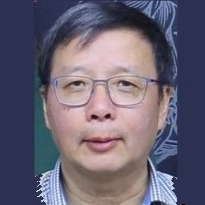Microwave Applications in Chemistry and Materials Processing
A special issue of Processes (ISSN 2227-9717). This special issue belongs to the section "Materials Processes".
Deadline for manuscript submissions: closed (31 October 2022) | Viewed by 11679
Special Issue Editors
Interests: microwave device design; microwave power application; computational electromagnetic and multi-physics
Special Issues, Collections and Topics in MDPI journals
Interests: fundamental microwave theory; novel microwave applications
Special Issues, Collections and Topics in MDPI journals
Interests: process safety and intensification; carbon capture; reuse and valorization; microwave processes
Interests: microwave plasma device design and its applications; microwave power application
Special Issues, Collections and Topics in MDPI journals
Special Issue Information
Dear Colleagues,
The addition of external energy is important for applications in chemical engineering or materials processing. Thanks to the direct interaction between the electromagnetic waves and the molecular structures of the materials to be processed, microwave energy presents efficiency and rapidity of energy transfer that are much more advantageous than those of conventional electrical energy. In addition to rapidity, microwave heating is more selective, showing possible savings in raw materials. Chemical reactions or syntheses of materials can be accomplished in minutes by microwave heating, whereas conventional heating would require hours or even days. It is a promising heat source that meets the modern requirements of sustainable development.
Since the publication by Gedye and Guiguere in 1986 on the use of a microwave oven to accelerate organic reactions, a large number of applications using microwave energy have been developed with success in organic, inorganic, and green chemistry for the processing of materials such as organic compounds, polymers, nanomaterials, biomaterials, or plasmas. As the appearance of personal computers (PCs) in the early 1980s contributed to the democratization of computing, the easier access to microwave equipment and to electromagnetic and multiphysics simulation software favored, and still favors, the arrival of new university teams and new industrial players to explore and develop more and more innovative and rewarding applications in the microwave chemistry and microwave materials processing sector. In this context, further research is necessary to better understand the interaction mechanisms between electromagnetic waves and new materials, to develop and manufacture new equipment, to study the electromagnetic properties of new materials, and to identify technical barriers and find innovative solutions for their remediation.
This Special Issue, “Microwave Applications in Chemistry and Material Processing”, aims at showing the most recent advances in the following areas:
- Microwave irradiation in inorganic, inorganic, medicinal, and green chemistry;
- Microwave applications in plasma, ceramics, polymers, minerals, and food;
- Microwave processing of biomass and waste;
- Microwave applications in medical and biological sectors;
- Modeling of microwave power applications;
- Measurement of dielectric properties;
- Design and optimization of microwave processing equipment;
- Safety in microwave processing;
- Microwave-assisted preparation of new materials.
Prof. Dr. Junwu Tao
Prof. Dr. Kama Huang
Prof. Dr. Lionel Estel
Dr. Li Wu
Guest Editors
Manuscript Submission Information
Manuscripts should be submitted online at www.mdpi.com by registering and logging in to this website. Once you are registered, click here to go to the submission form. Manuscripts can be submitted until the deadline. All submissions that pass pre-check are peer-reviewed. Accepted papers will be published continuously in the journal (as soon as accepted) and will be listed together on the special issue website. Research articles, review articles as well as short communications are invited. For planned papers, a title and short abstract (about 100 words) can be sent to the Editorial Office for announcement on this website.
Submitted manuscripts should not have been published previously, nor be under consideration for publication elsewhere (except conference proceedings papers). All manuscripts are thoroughly refereed through a single-blind peer-review process. A guide for authors and other relevant information for submission of manuscripts is available on the Instructions for Authors page. Processes is an international peer-reviewed open access monthly journal published by MDPI.
Please visit the Instructions for Authors page before submitting a manuscript. The Article Processing Charge (APC) for publication in this open access journal is 2400 CHF (Swiss Francs). Submitted papers should be well formatted and use good English. Authors may use MDPI's English editing service prior to publication or during author revisions.
Keywords
- Microwave power
- Microwave processing of chemical reactions
- Microwave processing of materials
- Microwave-driven plasma
- Biomass and waste processing
- Device design and optimization








